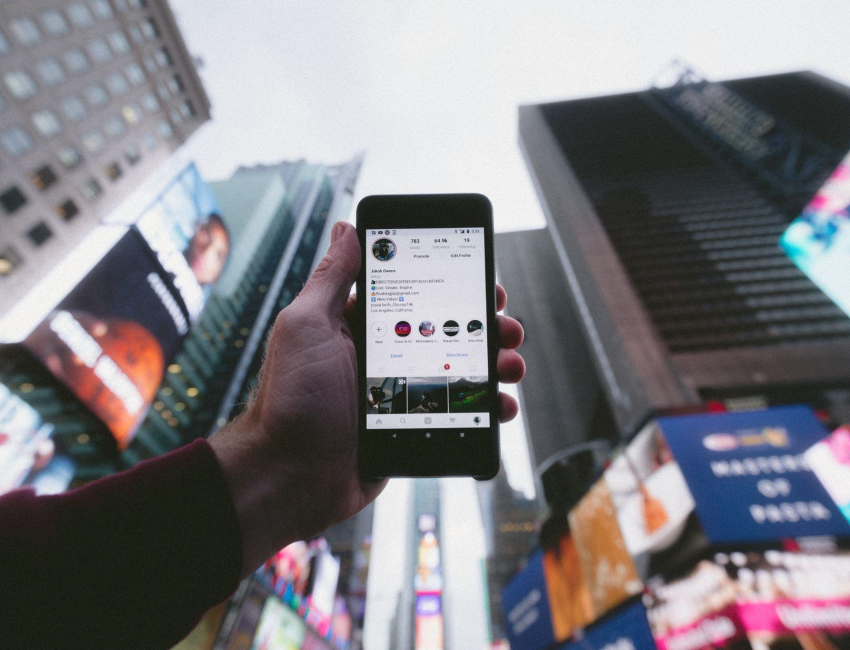Today it feels as though social media marketing has been around forever. As of this year, as many as 93% of marketers use social media to market their business. But everything had to start somewhere. 30 years ago, the main form of advertising came through TV or radio, even newspaper ads, and word of mouth. When social media began to support ads, it revolutionized marketing forever.
Let’s take a trip down memory lane and go over some of the fun facts about the history of social media marketing in today’s blog. You may remember some of these from your own formative experiences with social media.
Fact #1: The First True Social Media Platform Opened In 1997
Did you know that LinkedIn was actually formed before Facebook? There were many social media platforms that lasted for a couple years before shuttering, but the first social media platform was SixDegrees.com, which allowed users to create networks that they could message and interact with. Six Degrees opened in 1997, and was bought by Youth Stream Media Networks for $125 million in 2000. By 2001, the website had shut down.
However, there is a history of loose forms of social media that go back for as long as the internet has existed, since the 1960s and 70s. In these early days, many organizations tried to find ways to allow their computers to communicate with each other, which would serve as a sort of prototype for social media. The attempts weren’t popularized until the 90s and did not launch successfully until 1997 with Six Degrees.
More notably, MySpace opened in 2003, becoming one of the first social media platforms to truly take off. LinkedIn was formed in 2004, and Facebook perfected what MySpace began in 2006.
Fact #2: StumbleUpon Became a Boon For Marketers
StumbleUpon launched in 2002 with an exciting premise. A browser extension and a mobile app provided users with a “Stumble!” button. The button would then lead them to a random webpage based on their preferences. Users could also filter content to better fit what they were looking for, and they could rate pages with a “like.”
Through StumbleUpon, digital marketers could potentially have their website found totally at random by their target audience. This, along with search engines, led to honing content that would be more likely to appear to users, with engaging hooks that would lead audiences to want to learn more.
Fact #3: Arctic Monkeys Started With MySpace
Even after most users began moving away from MySpace to Facebook, there was one demographic that stuck around: indie musicians. In its few years of popularity, MySpace became a haven for new musicians who wanted to promote their music but might not have had the means that musicians on a big label would have.
MySpace allowed bands to upload audio files so that users could sample their music, similar to what BandCamp does now. MySpace comments also allowed these musicians to interact with their listeners, and bulletins allowed them to keep listeners informed when they would be playing somewhere.
This led to a rise in popularity of a number of bands, including English rock band Arctic Monkeys. When fans created a fan page for Arctic Monkeys on MySpace, they became known not just in the UK but internationally. Even though the band did not make the page themselves, it proved to be excellent marketing for them.
Fact #4: Yahoo Bought Tumblr in 2013
Tumblr launched in 2007 as a microblogging website that was soon flocked by young artists and creatives. By 2013, the platform had become a hub for energetic fans looking for others to gush with about their “fandoms.” On the other hand, by 2013, Yahoo was beginning to fall out of relevance compared to their competitors, especially Google. Yahoo looked at Tumblr and ended up offering founder and CEO, David Karp, $1.1 for the acquisition of the social media platform.
Yahoo CEO Marissa Mayer hoped to use Tumblr to become a bastion for advertising, something most of the user base greatly objected to. Work culture differences between the old Tumblr staff and the Yahoo staff led to a discontent with the acquisition. To this day, Tumblr users often joke that they chased Yahoo off by being “ungovernable,” while in truth, the issue more likely came down to the lack of time and effort that Mayer put into creating a viable plan for Tumblr.
Tumblr was sold to Verizon in 2017, leaving Yahoo with a loss of $1.5 billion. In 2019, Automattic, who owns WordPress, purchased Tumblr.


